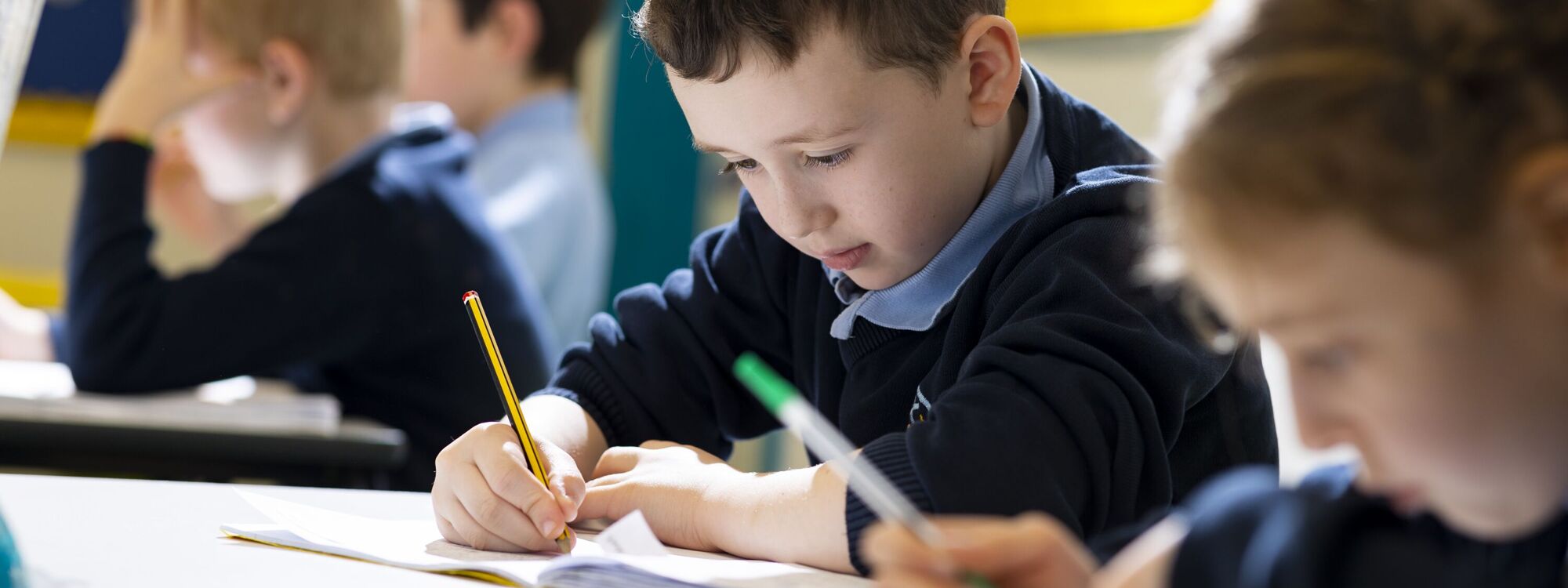
- Home
- Curriculum
- Subject Information
- Writing
Writing
We strive to give our children the best start in establishing secure foundations in writing. Our primary intent is to create avid readers which we believe is the foundation for any greater depth writer. We recognise the importance of nurturing a culture where children take pride in their writing and write clearly and accurately whilst selecting and adapting their language and style to suit a range of contexts, purposes, and audiences. We plan engaging units of work to enthuse, inspire and motivate our children, which are underpinned by core texts from our carefully developed reading spine. Our learning environments are stimulating but supportive and calming to ensure children can access the scaffolds needed to support their developing talk and writing. It is our intention that by the end of their primary education, all pupils will be able to speak and write clearly, accurately, and coherently, adapting their language and style in and for a range of contexts, purposes, and audiences.
These aims are embedded across our English lessons and the wider curriculum. We will provide the means for children to develop a secure knowledgebase in English, which follows a clear pathway of progression as they advance through the primary curriculum. Rigorous assessment and review will ensure that we are able to provide targeted support so that all children experience success in English; we believe that a secure basis in literacy skills is crucial to a high-quality education and will give our children the tools they need to participate fully as a member of society.
Talk for Writing How do we implement our English curriculum using the Talk for Writing approach?
We deliver English using Pie Corbett’s Talk for Writing approach. By focussing on the oral retelling of various text types, familiar structures become fully embedded in the long-term memory so that the children can later apply these structures to their own writing whilst developing the language techniques taught for the area of focus. For example, children may be writing using the structure of a portal story whilst developing their understanding of what makes an effective setting description. Core quality texts, from our well-developed reading spine, stand at the core of our English planning where we strive to intrinsically integrate the teaching of reading and writing. Children engage deeply with carefully selected texts as we foster their ability to: read as readers, read as writers, and finally write as readers. The primary aim of the reading spine is that we expose the children to a range of high-quality literature over the course of their primary school life. In this way, we can assist the children in their development of a rich vocabulary and of texts which are written with careful precision to captivate their audience.
Teachers create model texts for specific writing units which aim to demonstrate to the children the language techniques which are to be taught and developed. Typically, in a unit of work, the focus will be developed through internalisation and contextualisation of the model text where children deepen their understanding of a particular text type, exploring other examples through wider whole-class reading and later creating a ‘tool-kit’ for purposeful writing. Following sessions of deliberate practise, where children use ‘short-burst writing’ to develop the writerly tools and receive timely feedback to improve, children then write independently to fulfil their planned purpose.
The writing process is always modelled by the teacher during shared writing sessions. Because talk plays a central role in our curriculum, both English and beyond, children quickly develop in confidence whilst embedding their core communication skills and subsequently develop as articulate citizens.
How do we plan for progression in writing?
We believe that children need to develop a secure knowledge base in English which follows a clear pathway of progression as they advance through the primary curriculum. Teachers therefore plan ensuring a model of progression is sustained throughout school. In this way, children progressively develop their writing of different genres, building on and deepening their writing skills. Our Long-Term Plans ensure a range of fiction and non-fiction genres are covered which may be influenced by the core text and/or other curriculum learning.
When planning units of work, teachers will use their subject knowledge about the end of year expectations for the year group they teach, alongside our ‘Progression in Writing Document’ and ‘Pie Corbett’s Toolkits’ to ensure pitch is high. Model texts should always be aspirational; they should demonstrate the level of writing expected from the children whilst exposing them to the higher standard and a range of writerly tools which are specific to the writing focus.
How is writing assessed?
At the end of academic year, children will be assessed to be: WTS, EXS, GDS. This judgement can be supported using our bespoke ‘Writing Assessment Grids’ which have been developed to help assess children’s writing against the expected standard. To ensure consistency in judgements we actively monitor between classes across key stage and whole school. SLT and the English lead will look at a range of pupils’ work and discuss how they are making progress towards the expected standard at that point in the year. A more formal summer moderation meeting will be held; in these meetings, the English Lead will facilitate a moderation of final writing judgements between class teachers.